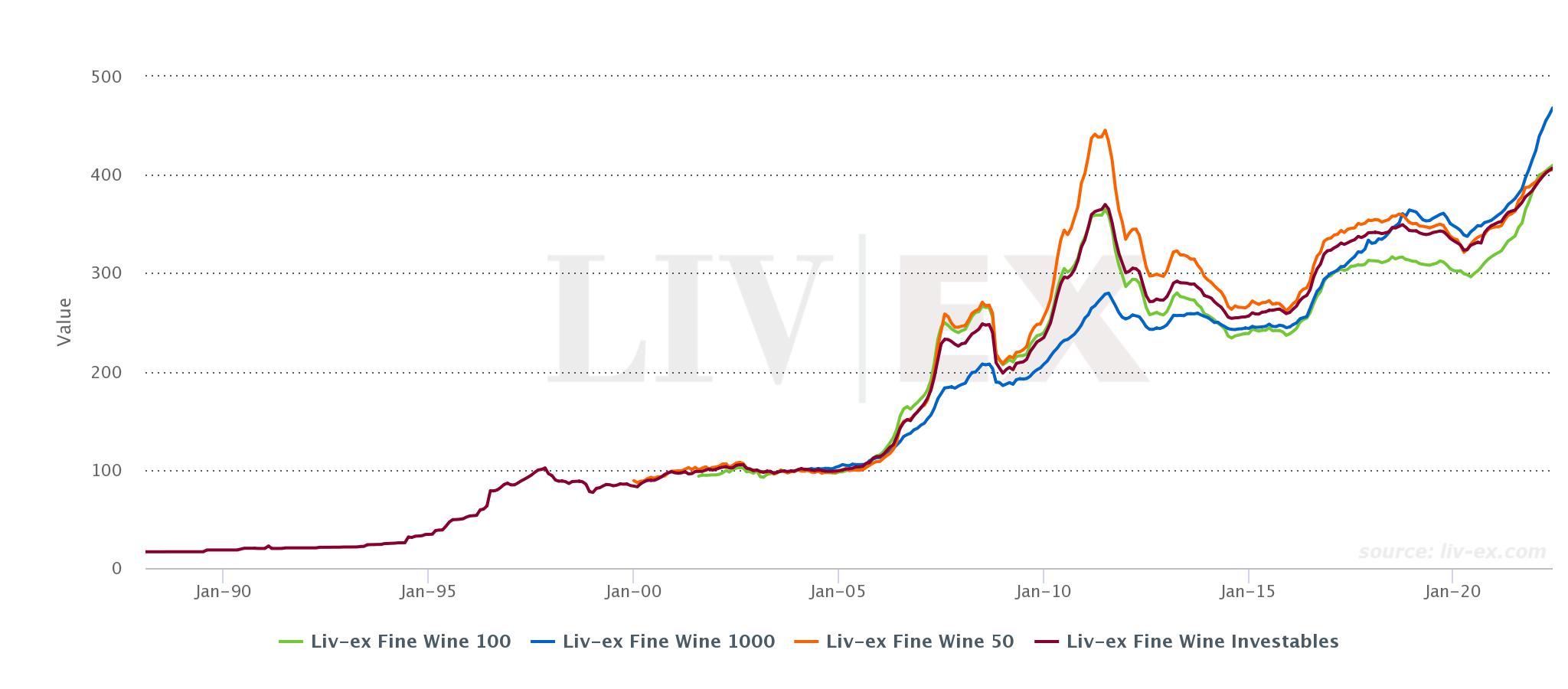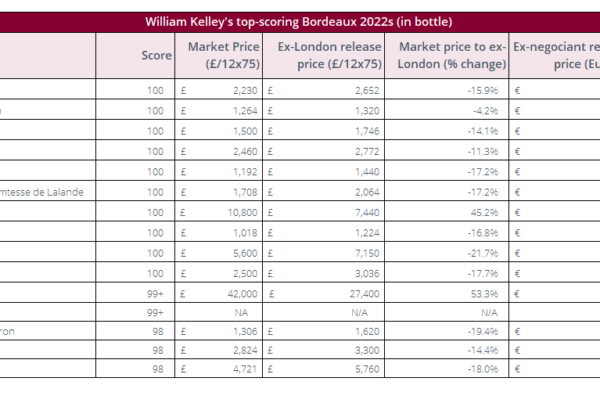- In mainstream markets, an index is a measure of the value of a portfolio of investment holdings.
- Similarly, in the fine wine market, an index represents a pool of actively traded wines.
- A fine wine index is used to gauge (a proxy) the movement and performance of the market.
Indices in mainstream markets
An index is a group of assets that represents and measures the performance of a market segment in a standardised way. Most commonly, indices are used to analyse broader market movements.
Indices are calculated based on the value of their underlying assets. They are usually weighted, which means that the impact of the individual index holdings is adjusted, based on factors such as market capitalisation. Indices are transparent, investable and systematic.
Some of the most popular market indices include the Financial Times Stock Exchange 100 Index (FTSE100), which tracks the 100 largest companies listed on the London Stock Exchange and The Standard and Poor’s 500 (S&P 500), which represents 500 large and actively traded US companies.
Indices in the fine wine market
Like other markets, the fine wine secondary market has its own indices, created by the need for transparency. To improve the transparency and traceability of the fine wine market, Liv-ex created its first fine wine indices in 2003.
The indices measure the movements of a pool of actively traded investment wines and reflect sentiment towards different fine wine producing regions. They are thus vital in understanding the fine wine market dynamic, and its historic and possible future performance.
Price, scarcity and production weightings might be applied to different components.
The importance of independent transactional data
The Liv-ex indices rely on independent transactional data. Independent, because Liv-ex itself does not trade; transactional, because the data is gathered from actual real-time trading activity of 600 of the world’s leading fine wine merchants. The indices are benchmarks of the fine wine market and quoted on Bloomberg terminals.
The Liv-ex fine wine indices are calculated using the Mid-Price – the mid-point between the highest live bid and the lowest live offer on the secondary market. These are firm commitments to buy and sell rather than advertised prices, which may not accurately reveal the real value or the availability of a wine. It is for this reason that financial information providers, merchants and wine funds consider Liv-ex indices the sector benchmark.
Major fine wine indices

*made with the Liv-ex Charting tool.
The Liv-ex 100 was the first benchmark fine wine index, based on real time transactional data. It was launched in 2004 and back-dated to July 2001. The index consists of 100 of the most sought-after fine wines on the secondary market that have met the requisite criteria regarding trade by volume and value.
The Liv-ex Fine Wine 50 index tracks the daily price movements of the Bordeaux First Growths. It includes the 10 most recent vintages of Lafite Rothschild, Margaux, Mouton Rothschild and Haut-Brion (2009-2018) and the 2004-2013 vintages of Latour. It goes back to December 1999.
The Liv-ex Fine Wine Investables index contains wines awarded at least 95-points from a leading critic. The top eight ‘brands’ of Bordeaux – the five First Growths, Ausone, Cheval Blanc and Pétrus – are included on the basis of a score of 93 or above.
The Liv-ex Fine Wine 1000 index tracks 1,000 wines from across the world and is the broadest measure of the market. It comprises seven sub-indices which represent the most traded wines from regions around the world: the Bordeaux 500, the Bordeaux Legends 40, the Burgundy 150, the Champagne 50, the Rhone 100, the Italy 100 and the Rest of the World 60.
For more information on the different types of indices and their components, visit our Indices page.
Liv-ex members can explore the data behind the indices using the Indices Explorer tool, and chart Liv-ex indices against other asset classes using the Charting tool. For more information, click here.
Members on certain packages can pull Liv-ex indices into their own systems and websites, using the Indices API. To find out more about these opportunities, click here.
Not a member of Liv-ex? Request a demo to see the exchange and a member of our team will be in touch with you shortly.
Liv-ex analysis is drawn from the world’s most comprehensive database of fine wine prices. The data reflects the real time activity of Liv-ex’s 580+ merchant members from across the globe. Together they represent the largest pool of liquidity in the world – currently £100m of bids and offers across 16,000 wines. Independent data, direct from the market.



